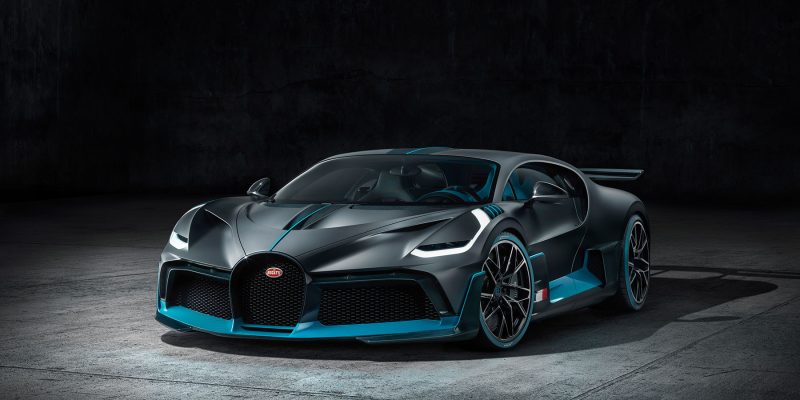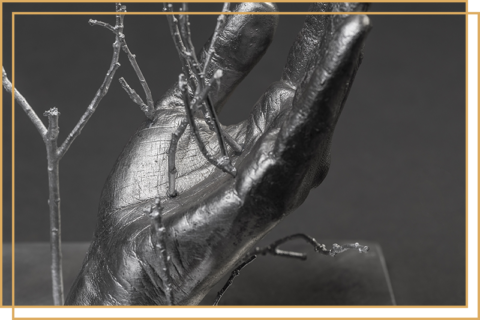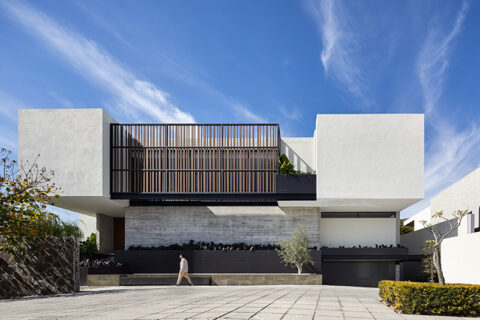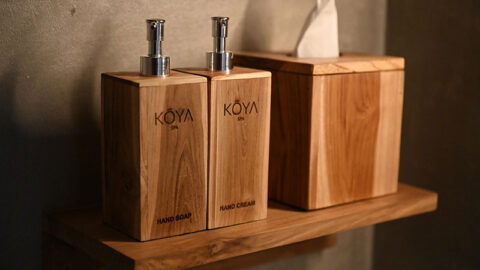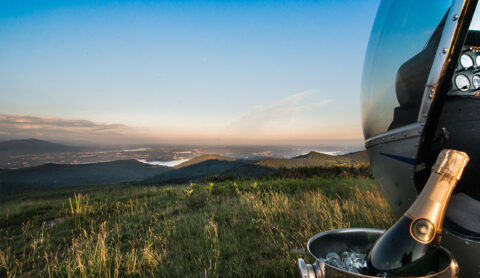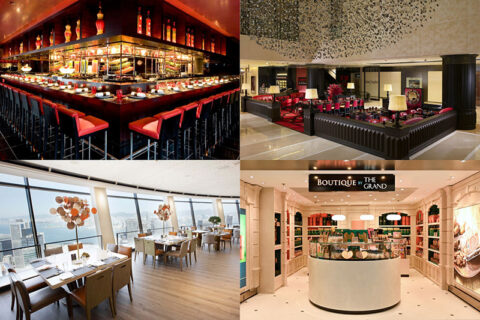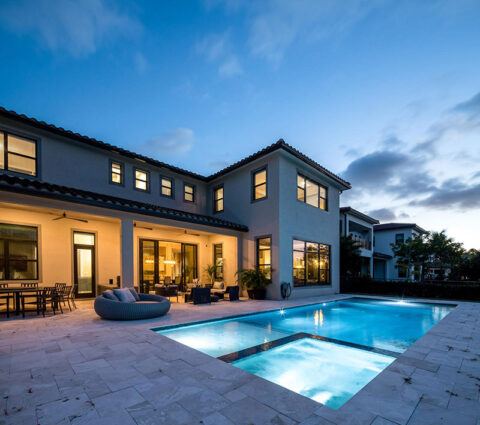The Divo represents the modern interpretation of the brand’s coachbuilding tradition. A sophisticated aerodynamics programme makes for optimum vehicle cooling and 90 kilograms more downforce.
The aerodynamic properties of the Divo were improved by a considerable amount of detailed work. The front cover is equipped with air intakes which reduce the effective cross-sectional area of the vehicle at the same time as ensuring improved air flow at the front and increasing aerodynamic efficiency. An optimized “air curtain” makes for better air flow over the front and rear sections of the car’s sides.
The newly-designed, wide front spoiler provides higher downforce and guides more air to the front air inlets. The cooling system therefore receives a higher mass flow and overall cooling performance is improved.

The brakes are cooled by four independent air sources on each side of the vehicle: air flows in from the high-pressure area above the front bumper, the inlets on the front wings, one inlet on the front radiator and the diffusers ahead of the tyres. Vanes direct the cold air from these areas onto the brake discs. A heat shield carries the hot air out through the wheels. This means that the brakes do not overheat and the tyre temperature is always kept in the optimum range. This system, which is already used on the Chiron, receives additional support from the vacuum generated by the air curtain on the tyres in the case of the Divo. In addition, the wheel arches are ventilated via slats on the wings.

The roof of the Divo has been designed to form a NACA air duct, a flow-optimized air inlet. In combination with the specially designed engine compartment cover, this ensures a very high air mass flow to the engine compartment, playing a key role in temperature management in this area of the vehicle.

The rear end of the Divo features a new, height-adjustable rear spoiler which functions as an air brake when turned forwards and is set to different angles for the individual driving modes. The rear spoiler has a width of 1.83 metres (72”) and is therefore 23 percent wider than on the Chiron. The wider spoiler improves efficiency and results in higher air brake performance as well as significantly more downforce.
The downforce is also boosted by the rear diffuser which has been entirely redesigned for greater efficiency and accommodates four tailpipes.

The total downforce generated is 456 kilograms, 90 kg more than on the Chiron.
New chassis and suspension settings as well as weight reduction make the Divo a star performer on corners

The main objective of chassis development work was to improve cornering dynamics; the Divo was to be sharper, more agile and more nimble. For this purpose, the camber was increased. As a result the maximum speed of the Divo is limited to 380 km/h. In contrast to the Chiron, there is therefore no Top Speed mode. As regards lateral acceleration, the Divo reaches 1.6 g. These changes alone ensure a perceptibly different driving experience on winding roads.

The steering and suspension have been set to ensure more direct response and significantly sportier driving behaviour in all modes (EB, Autobahn and Handling). The Divo is 35 kilograms lighter than the Chiron. The weight reduction is the result of a number of design modifications including new lightweight wheels and a carbon fibre intercooler cover. Weight was also saved by the fixing of the front diffuser flaps, a reduction in the amount of insulation material used and the installation of a lighter sound system. In order to reduce the weight, stowage compartments on the central console and in the door trims have also been omitted. The Divo can therefore lap the Nardò handling circuit eight seconds faster than the Chiron.
New progressive design language underlines the inner values of the Divo. A new suit of clothes for a new character
The design team continued the evolution of the design elements for the Divo in line with the design brief and reinterpreted the design philosophy “Form follows Performance”. The outer skin of the Divo was designed in an uncompromising way to emphasize lateral acceleration. The main objective was to achieve optimum aerodynamic and thermodynamic efficiency. At the same time, the Divo represents a new styling approach which the design team has developed especially for a coachbuilt Bugatti and which is distinguished from the modern core products of the brand.

The slimmer side line of the Divo helps make the vehicle look lower and longer. The new proportions allow a visual horizontal division of the body, which is reinforced by a special colour scheme. The top, more elegant section is painted with a matt finish in a silver colour “Titanium Liquid Silver” developed especially for the Divo. This effectively underpins the sculptural, muscular form of the car. The long domed areas with their smooth surfaces along the C-pillar and the rear side sections optically shift the driver’s cab forwards. This gives the Divo an extremely dynamic appearance even when the vehicle is standing still.
The lower part of the sides has more of a functional, technical design, reinforcing the car’s forceful appearance and giving it a confident stance on the road. This section features exposed carbon fibre tinted in a petroleum blue shade, “Divo Carbon”, developed especially for this model.

An entirely new architecture was developed for the front of the car. There are additional air inlets for brake cooling. The new, vertically oriented front lights with daytime running light on the outer edge in each case give the Divo an appearance of greater width. With a light opening which is only 35 millimetres (1 3/8“) flat, the extremely compact, lightweight LED headlights move into a new technical dimension. A light animation developed especially for the Divo underlines the distinctive signature of the front end. The horizontal split into a lower carbon and an upper matt silver section also makes the Divo look lower and underlines the optical impression of width.
The NACA air inlet on the roof creates an optical connection with the air outlet in the centre of the front cover and guides the air towards the rear spoiler. The fact that the central line runs from the front over the roof to the rear spoiler is not only a reminiscence of Bugatti’s legendary past but also serves a function. This configuration prevents air eddies from forming over the vehicle, creating turbulence on the rear spoiler.

One highlight at the rear of the vehicle is definitely the new, highly sophisticated 3-D rear light. This is actually part of the rear grille, which is partly produced by a 3-D printing process and has special lightweight fins with a variety of sizes. A total of 44 of these fins light up, forming the rear light of the Divo. At the outer edge, the fins become wider, creating a more intensive light. Towards the centre of the vehicle, they are narrower, resulting in gradual fading of the light. The result is a striking appearance which means that the Divo is also unmistakable from the rear.
The two-tone colour scheme also intensifies the forceful impression created by the rear. The fenders are painted in “Titanium Liquid Silver” with a matt finish and are optically distinguished from the parts which control airflow at the rear end. Air outlets, rear spoiler and diffuser have a carbon finish.

“Divo Racing Blue”, a bright turquoise blue shade developed especially for the Divo, underlines the three-dimensional character of the three surfaces leading to the air inlets and outlets on the front, sides and rear, creating dynamically contrasting effects.
The technical character of the colour scheme and materials used for the exterior is continued in the interior. A matt version of the exclusive high-gloss carbon fibre used on the exterior is to be found in the interior.

The colour effects of the carbon tint and exterior paintwork are reflected on a 1:1 basis by the dark “Divo Grey” petroleum tone of the Alcantara in the interior, providing a subtle contrast with the glass-blasted anodized grey surfaces of the metal parts.
The distinctive “Divo Racing Blue” is also used as an Alcantara leather tone in the interior, where it plays a special role by providing an optical split in the interior surfaces. This colour is used almost throughout the driver’s section while it only provides selected accents in the darker passenger’s section.
Another stylistic link between interior and exterior is created by the door trims and seat areas, which feature an embroidered three-dimensional rhomboid structure with an algorithmic configuration, reinterpreting the structure of the grille and rear lights.
Technical innovations in the interior include the seats, which not only feature a new design but offer greater lateral support. The steering wheel is partly covered with Alcantara and has larger paddles fitted firmly on both sides of the wheel. Thanks to larger armrests and calf supports, the central console ensures greater comfort.

Car named after French racing driver and two-times Targa Florio winner Albert Divo
Albert Divo was born in Paris on 24 January 1895 under the name of Albert Eugène Diwo (he called himself Divo later). After service as a fighter pilot in the First World War, he worked as a mechanic. His career as a racing driver started with Sunbeam and Talbot-Darracq in 1919. He enjoyed rapid success and won the 1923 Spanish Grand Prix in Sitges In 1924, he moved to Delage and entered a number of sprint races in France. In 1926 and 1927, he again raced for Talbot, where he was less successful as a result of problems with an insufficiently mature design. He then returned to Delage but was not entered for any races. When Talbot and Delage retired from racing, Divo joined Bugatti’s works team in 1928. The same year, he won the Targa Florio in Sicily driving a Type 35 B. He repeated this success the following year. He took third place at Spa in 1930. Up to 1933 he entered further races for Bugatti with the Types 51, 53 and 54, as well as hillclimbs with the Types 45 and 47. From 1936, he raced for Delahaye and Talbot. He retired from racing in 1939. Following the Second World War, Albert Divo worked as racing manager for Castrol. In 1962, he was a founder member of the Club International des Anciens Pilotes de Grand Prix F1 in Villars-sur-Ollon (Switzerland). Divo received the Legion of Honour. He then led a withdrawn life and died in Morsang-sur-Orge to the south of Paris on 19 November 1966.
Divo definitely celebrated his greatest success with Bugatti, whose dominance of the Targa Florio started in 1925. The legendary Targa Florio, held on a mountain circuit in Sicily each year until 1977, was certainly one of the most arduous of all the endurance races of its time. Bugatti won the race five times in succession with the Type 35.
Bugatti coachbuilding: factory coachwork made in Molsheim
With the Divo, Bugatti is reviving its coachbuilding tradition. While Ettore Bugatti’s vehicles of the 1920s represented lightweight design and technical innovation, it was his son Jean who made the Bugatti bodies of the 1930s into style icons of their time. To this day, Jean’s creations embody the golden era of French coachbuilding. In their own way, father and son both contributed to the very special myth of the Bugatti marque.

In the mid 1920s, Ettore Bugatti involved his son more and more in the business of the company and it was Jean who developed concepts for Bugatti bodywork, first for the Type 41 Royale and, from 1926, also for the Type 40. Up to that point, two-seater and four-seater sports convertibles and coupés had been made by coachbuilders such as Gangloff or Lavocat & Marsaud. In order to realize his ideas, Jean engaged the services of talented body designer Joseph Walter.
It was Walter who put Jean’s ideas into practice and developed the classical Bugatti coachbuilding tradition with the Grand Sport bodies for Types 40 and 43 through to the Type 57 bodies of the 1930s. For the Type 57, various bodies such as Stelvio, Aravis, Galibier, Ventoux or Atalante could be ordered as factory options. The best-known coachbuilt creations from Bugatti were definitely the streamlined Type 50, the Type 55 roadster and the Type 57SC Atlantic.


